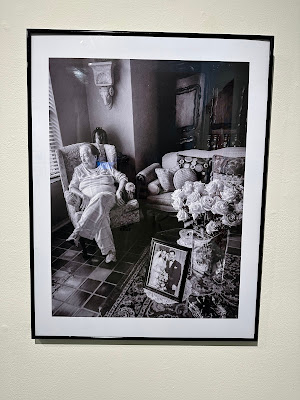Part 1 - Curatorial Activism defined
The two readings, This Is What I Know About Art, by Kimberly Drew and in Maura Reilly’s essay, Towards Curatorial Activism, they talk about how artists, writers, curators, historians can all create a change within the art world. They can use their influence to challenge inequality. Kimberly Drew talks about her discovery into Black artists. She starts a Tumblr page showing many artworks by Black creators who were often ignored by museums and galleries. This connects to Bell Hooks idea of representation. Hooks argues that making space for oppressed voices is key to changing systems of oppression. Kimberly Drew stated in her book "It was not just enough to be angry. I had to be strategic." It is not enough to be angry with a situation, you must go out and do something about it. Do something visually to get peoples' attention. Kimberly Drew did this with her blog. In class we discussed things very similar to this, that is the activism part of it. Using a platform, your work, to create a change you want to see. Curator putting together shows of things they want to see, things that have a specific message they are trying to get out there. Sometimes a theme if you will. "If being in the arts has taught me anything, it is that one of the wisest things anyone can say is 'I don't know'” In Drew ‘s book, I think a pivotal moment for me was when she was talking to her professor about a discussion that had happen in class and where he had told her “If you wanted to be in a classroom with other students of color then you should not have enrolled in art history classes.” (page 27) This was a really important time in the book I believe because we still see art as an old white male thing. You don’t think about colored artists, female artists, etc right off the bat. In museums and art shows there is a divide that we talked about in class, and now there are people there to break that divide in ways like Kimberly drew is doing with her Tumblr page. Bringing attention to not just white male artists but those of color. Those amazing pieces.
Part 2 - Art Example
I chose these two artworks from the art in the exhibition Lente Latine/Latin Lens. The curator photographer Natali Bravo-Barbee made the exhibition highlight these artists’ exploration of their ancestral roots, cultural identity, and diasporic communities through varied photographic techniques. I think the entire exhibition is activism just because its just Latin photographers, Latin artists. It is not the mainstream of white males. In the first artwork Recordando Otros Tiempos by Orestes Gonzales you see his mother at an elder age looking out the window with a picture of her and her husband on the table at a younger age on the day of their wedding at the for front of the photo. In the second photo JUMP! By Manuel Acevedo you see a small girl jumping on old dirty mattresses outside for fun. Growing up where he did in Newark NJ this was common for them; it was almost like their playground. He is showing the cultural identity for that area and that time. Maura Reilly wrote "Instead of being disheartened by the sad reality, it is perhaps more productive to be proactively antithetical: to misbehave, to talk back, while dedicating ourselves to disrupting the hegemonic discourse from within by showing the gaps in representation, ‘the blind spots, or the space-off, of its representations'." (page 14) I feel like that is what these artists have done.
works cited;
Drew, K. (2020). This is what I know about art. Penguin.
Reilly, M. (n.d.). TOWARD a CURATORIAL ACTIVISM. Western Art – It’s a White Male Thing, 1. https://www.maurareilly.com/pdf/essays/CIAFessay.pdf
Hooks, B. (n.d.). Understanding patriarchy. https://imaginenoborders.org/pdf/zines/UnderstandingPatriarchy.pdf


No comments:
Post a Comment